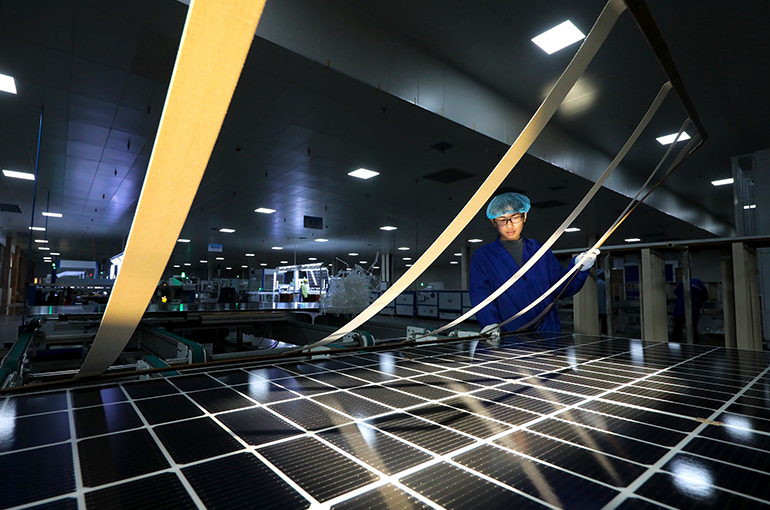 China’s Solar Sector Faces Uncertainty After US Tariff Hike, Insiders Say
China’s Solar Sector Faces Uncertainty After US Tariff Hike, Insiders Say(Yicai) April 3 -- While the unexpectedly high Reciprocal Tariffs imposed by the United States yesterday are likely to have a negative impact on China’s photovoltaic industry, the actual effect will depend on how sustainable the tariffs prove to be and whether trading partners respond with countermeasures, industry insiders told Yicai today.
The US’ long-awaited Reciprocal Tariffs scheme, which establishes a 10 percent "minimum base tariff" on all trade partners, was announced by President Donald Trump yesterday and will come into effect on April 5. It includes a 34 percent tariff on China, 32 percent on Indonesia, 36 percent on Thailand, 46 percent on Vietnam and 49 percent on Cambodia. There will also be Discounted Reciprocal Tariffs for countries with larger trade deficits, effective April 9.
The US Reciprocal Tariffs on China are likely to have a limited impact on the PV industry, said Zhong Baoshen, chairman of Longi Green Energy Technology. This is because, due to various trade restrictions, the direct export of PV products from China to the US has been nearly zero over the past few years, and hardly any Chinese solar products are shipped directly to the US.
However, many Chinese companies have been building up significant capacity in Southeast Asia over the past few years and now have nearly complete solar supply chains overseas. As most of the PV cells and modules supplied to the US come from Southeast Asia, the new tariffs on several countries in the region are expected to have an effect on these exports.
"This will certainly raise the cost of overseas production for the US market,” a representative from a Chinese solar panel maker told Yicai. “But at the same time, since there is a shortage of high-efficiency PV cell production in the US, these tariffs are likely to push up the price of solar panels in the US even more.”
"We do not believe that these unusually high tariffs will be in place for long," Hong Kong investment bank SPDB International Holdings said in its latest research report. “Considering the damage that high tariffs could inflict on the US economy, Trump may postpone or lower the rates for certain countries after bilateral negotiations. However, the 10 percent "minimum base tariff" is likely to remain for most countries.”
In 2023, many leading Chinese photovoltaic companies, including Longi, Jinko Solar, Trina Solar and JA Solar Technology, all announced plans to build factories in the US.
"The US market is attractive, but it also has complex geopolitical implications," a representative from Longi said today. The price of solar panels in the US has been about triple those in other parts of the world for the past two years. The Xi’an-based firm is setting up a 5 gigawatt PV module factory in Ohio together with US energy giant Invenergy that will mostly focus on producing Passivated Emitter and Rear Cell modules.
Editor: Kim Taylor